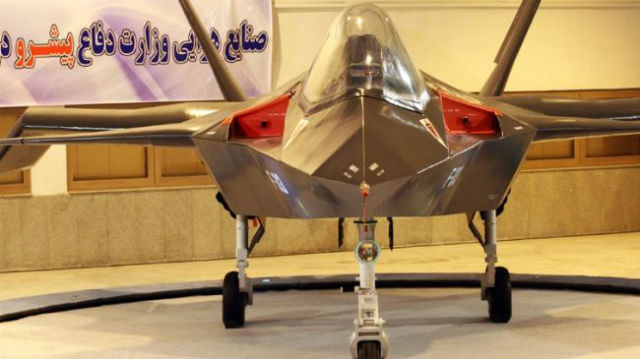Israeli experts say the "indigenous fighter jet" Iran presented on 2 February is nothing more than a "very sleek plastic model".
Still images and video footage released by Iranian state media reveal the Qaher 313 as having design features, including distinctive faceted edges and angles, resembling those on US stealth aircraft such as Lockheed Martin's F-22 and F-35. The new type also has large, but seemingly fixed, canards behind its cockpit, and short wings.
 |
|---|
However, Israeli sources note the aircraft's canopy appears to be constructed of "basic plastic", and its engine air intakes are unusually small. "The whole impression is of some plastic parts pasted to an old flying platform," one says.
One Israeli expert says the Qaher 313 is also too small to be a capable fighter: "The only parts that look real are the cockpit and the ejection seat, but that is easy to show."
Video footage showing the Iranian design airborne "could easily be a radio-controlled model aircraft", the source claims. Poor-quality footage posted on the internet provides no sense of scale for the platform being flown, and also fails to show its take-off or landing.
Other design factors show "many details that are against any stealth capability", Israeli experts say, including the Qaher 313 having no visible weapons carrying capability, either internally or externally.
Iran has a history of presenting new weapon systems which are, in fact, adapted versions of older equipment. These include its Saeqeh (Thunderbolt) fighter unveiled in 2006, which was clearly a Northrop F-5 with a few new features, including a twin tail and leading-edge strakes. Tehran has also shown footage it says shows indigenous helicopters derived from its armed forces' legacy Bell AH-1 and UH-1 rotorcraft.
Source: Flight International










































